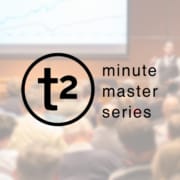Daily Minute Master Series – September 17, 2019
Social Media
Facebook video marketers get new tools, metrics for Live, Watch Parties, Creator Studio
Facebook is releasing new features and metrics for its Live API, Watch Parties and within its Creator Studio, all of which can be used by marketers to advance their video efforts. Video creators on the platform are also getting a new trimming tool for Live video, allowing them to trim the beginning or end of a Live video. Facebook is also extending the maximum duration for Live broadcasts via the Live API from four hours to eight hours. Facebook is making it possible for video creators to publish and schedule video content on Instagram and Instagram’s long-form video app IGTV. Page admins will be able to schedule video content on the Instagram platforms up to six months in advance via the Creator Studio, and Facebook reports it is working on new drafting and editing features for videos published to the Instagram Feed and IGTV which will be available in the coming months. Facebook’s video tools and metrics help marketers fine tune their efforts, offering more ways to connect with users and more insights into the content that is delivering engagement. Being able to do small things — like rehearse a Live broadcast or schedule content six months out — not only expands a video marketers took kit, but gives brands more flexibility and control in terms of the video content they’re producing on the platform.
For the full article click here
YouTube’s Testing a New Option to Display Each Users’ Comment History in Channels
YouTube is working on a new profile card option which would display a full listing of any users’ comment history, within a specific channel, when that users’ name is tapped/clicked. As you can see here, the new listing would display the users’ full comment history on that channel – not their entire comment history across the platform overall. that might come as a relief to those who have a penchant for composing pithy, yet potentially offensive, YouTube comments. And as noted by TechCrunch, it can also help in assessing people who should become “approved users”, who’s comments get published automatically, without requiring approval. The feature is now in testing, along with a new test of a personalized message option for users who are likely to become subscribers, in order to see if that added personal touch helps increase subscriber counts.
For the full article click here
Marketing
Google Search Console adds Datasets to enhancement reports section
Google has added a new report to Google Search Console to let you see how your datasets are performing in Google Search. The new report can be found in the enhancements section under “Datasets” if, and only if, you use Datasets markup on your web pages. Google in 2018 launched Google Dataset Search, a search service to find data from sciences, government, some news organizations. Google also launched new schema that developers can use to markup your web page content, when applicable, with dataset schema. This schema makes it possible for searchers to better visualize data represented on a web page directly in Google’s search results. Having more information from Google about the health of our pages in search is a good thing. If you have implemented datasets schema, this new report should be able to help you find potential issues and debug them going forward.
For the full article click here
Google tests “in this video” search feature
Google often shows video results in its search results, in fact, Google has a feature to show suggested clips, a method to jump you to the portion of the video that answers your specific query. Now, it appears, Google is testing showing “in this video” – a timeline that shows you what sections of the video talks about sub-topics. The “in this video” section shows up under a video snippet in the Google search results. It will show you sub-sections of the video in a timeline format, letting you click to jump ahead to that specific portion of the video. Clearly, between the suggested clip and this feature, Google knows what content is within the video. Google is able to jump over irrelevant portions of your video and send people directly to the section the searcher wants to see and hear. Structuring your video content in a clear and understandable way so that humans and robots can easily breakdown the format of the video may become more important in your video SEO strategy.
For the full article click here





